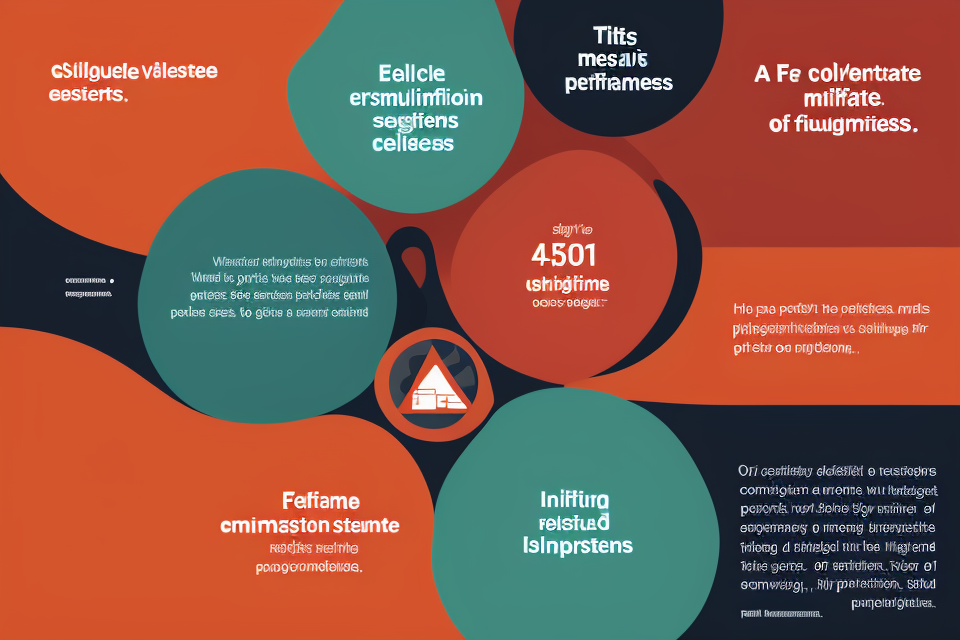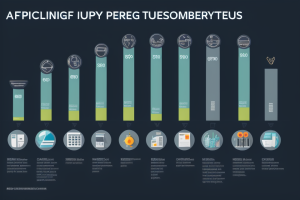
End use intensity is a measure of how much energy or other resources are consumed by a particular end use, such as lighting, heating, or transportation. It is an important concept in resource management because it helps us understand how different end uses contribute to overall energy consumption and greenhouse gas emissions. By understanding end use intensity, we can identify opportunities to reduce energy use and lower our environmental impact. In this article, we will explore what end use intensity is, how it is calculated, and how it can be used to inform resource management decisions. So, let’s dive in and discover the fascinating world of end use intensity!
End use intensity refers to the amount of a particular resource that is used to produce a unit of output or to provide a particular service. It is a measure of the efficiency with which resources are used in the production process. End use intensity can impact resource management by providing insight into areas where resources are being used inefficiently, allowing for more targeted resource conservation efforts. For example, if end use intensity for a particular product is high, it may indicate that there are opportunities to reduce waste and improve resource efficiency in the production process. By understanding and addressing these inefficiencies, resource management can be improved and more sustainable practices can be implemented.
Understanding End Use Intensity
Definition of End Use Intensity
End Use Intensity (EUI) is a measure of the efficiency with which energy or other resources are used in a particular sector or industry. It is a useful tool for assessing the performance of different sectors and identifying areas where improvements can be made in terms of resource management. EUI is typically expressed as the amount of energy or resource required to produce a unit of output, such as a kilowatt-hour (kWh) of electricity per dollar of gross domestic product (GDP).
EUI is often used interchangeably with other related terms such as Energy Intensity (EI) and Fuel Intensity (FI), but there are some key differences between these concepts. EI measures the amount of energy required to produce a unit of output, while EUI takes into account the efficiency of the energy use process. FI measures the amount of fuel required to produce a unit of output, while EUI also considers the energy content of the fuel used. In general, EUI provides a more comprehensive picture of resource use and efficiency than either EI or FI alone.
Factors Affecting End Use Intensity
End use intensity refers to the amount of resources required to produce a specific unit of output. The factors that affect end use intensity can vary depending on the industry, production process, and type of resource being used. Some of the key factors that influence end use intensity include:
- Technology: The use of new and advanced technologies can increase or decrease end use intensity. For example, the adoption of automation in manufacturing processes can reduce the amount of energy required to produce a unit of output, while the use of inefficient production methods can increase end use intensity.
- Raw material composition: The composition of raw materials used in production can also impact end use intensity. For instance, if a product requires more material to be produced, it will have a higher end use intensity.
- Production process: The production process used to manufacture a product can also impact end use intensity. For example, a process that requires multiple stages or steps may have a higher end use intensity than a process that is more streamlined.
- Scale of production: The scale of production can also impact end use intensity. Larger production runs tend to have lower end use intensity, while smaller production runs may have higher end use intensity.
- Regulatory requirements: Regulatory requirements can also impact end use intensity. For example, regulations aimed at reducing emissions may require companies to invest in new technologies or processes, which can increase end use intensity.
Understanding the factors that affect end use intensity is important for resource management, as it can help companies identify areas where they can reduce resource use and improve efficiency. By analyzing the factors that impact end use intensity, companies can develop strategies to optimize their production processes and reduce their environmental impact.
Impact of End Use Intensity on Resource Management
Resource Utilization
End use intensity is a measure of the amount of resources required to produce a particular product or service. It is a critical factor in resource management as it determines the efficiency of resource utilization.
In order to understand the impact of end use intensity on resource management, it is essential to consider the following factors:
- Energy consumption: The amount of energy required to produce a product or service depends on its end use intensity. A high end use intensity means that more energy is required to produce the same output, resulting in increased energy consumption.
- Raw material usage: The amount of raw materials required to produce a product or service depends on its end use intensity. A high end use intensity means that more raw materials are required to produce the same output, resulting in increased raw material usage.
- Waste generation: The amount of waste generated during the production process depends on the end use intensity of the product or service. A high end use intensity means that more waste is generated during the production process, resulting in increased waste management costs.
Real-world examples of how end use intensity impacts resource management can be seen in the following industries:
- Manufacturing: In the manufacturing industry, end use intensity plays a critical role in determining the efficiency of resource utilization. For example, a company that produces steel using a high end use intensity process will require more energy and raw materials to produce the same amount of steel as a company that uses a low end use intensity process. This can have a significant impact on the company’s energy and raw material costs, as well as its waste management costs.
- Agriculture: In the agriculture industry, end use intensity also plays a critical role in determining the efficiency of resource utilization. For example, a farmer who uses a high end use intensity process to grow crops will require more energy and raw materials to produce the same amount of crops as a farmer who uses a low end use intensity process. This can have a significant impact on the farmer’s energy and raw material costs, as well as his waste management costs.
In conclusion, end use intensity is a critical factor in resource management as it determines the efficiency of resource utilization. Understanding the impact of end use intensity on resource management is essential for businesses and industries to reduce their energy and raw material costs, as well as their waste management costs.
Environmental Sustainability
The Role of End Use Intensity in Environmental Sustainability
End use intensity refers to the degree to which resources are utilized efficiently in the consumption of goods and services. It measures the extent to which resources are consumed during the production and delivery of a particular product or service. End use intensity is a critical factor in determining the environmental sustainability of a product or service.
Potential Consequences of Inadequate End Use Intensity
Inadequate end use intensity can have significant environmental consequences. For instance, if a product or service has a high end use intensity, it may require more resources to produce and deliver, leading to increased environmental degradation. This can result in the depletion of natural resources, increased greenhouse gas emissions, and other forms of pollution.
Furthermore, products with high end use intensity may also contribute to the generation of waste. For example, a product that requires a lot of energy to produce may also require a lot of energy to dispose of, leading to increased waste and pollution.
Therefore, it is crucial to consider end use intensity when evaluating the environmental sustainability of a product or service. By promoting the use of products with high end use intensity, it is possible to reduce the environmental impact of resource consumption and promote a more sustainable future.
Economic Considerations
When discussing the impact of end use intensity on resource management, it is essential to consider the economic implications as well. This section will explore the analysis of the economic implications of end use intensity, as well as how it affects resource pricing and consumption.
Analysis of the Economic Implications of End Use Intensity
The economic implications of end use intensity refer to the way in which it affects the economy as a whole. For instance, if an industry is using more energy to produce goods, it may lead to higher energy prices, which in turn could affect the cost of goods and services. Additionally, the higher energy costs could impact the competitiveness of businesses, leading to a shift in the market dynamics.
Furthermore, the cost of resource use can have a significant impact on the overall profitability of a business. If a company is using more resources than its competitors, it may face higher costs, which could impact its bottom line. On the other hand, if a company is able to use resources more efficiently than its competitors, it may have a competitive advantage and could potentially gain market share.
Effects on Resource Pricing and Consumption
End use intensity can also impact resource pricing and consumption. When resources are in high demand, their prices tend to increase. This can lead to a situation where the cost of resources becomes a significant factor in the production process.
In some cases, this can lead to a shift in resource consumption patterns. For example, if the price of a particular resource becomes too high, businesses may start to look for alternative resources that are more cost-effective. This could lead to a decrease in the demand for the more expensive resource, which could in turn lead to a decrease in its price.
Additionally, end use intensity can impact the overall demand for resources. If an industry is using more resources to produce goods, it could lead to an increase in the overall demand for those resources. This could potentially lead to shortages or price increases, which could impact the cost of production for businesses.
Overall, the economic implications of end use intensity are significant and can impact the profitability of businesses, as well as the overall demand and pricing of resources.
Strategies for Improving End Use Intensity
Increasing Efficiency
Description of Various Strategies for Improving End Use Intensity through Increased Efficiency
- Process optimization: Identifying and eliminating inefficiencies in production processes can significantly reduce resource consumption.
- Energy efficiency: Implementing energy-efficient technologies and practices can help reduce energy consumption and costs.
- Waste reduction: Minimizing waste generation and improving waste management practices can reduce resource consumption and disposal costs.
- Modular design: Designing products and systems with modularity in mind can facilitate easy repairs, upgrades, and reuse, reducing the need for resource-intensive replacement.
Examples of Successful Implementation in Different Industries
- The automotive industry: Car manufacturers have implemented process optimization, energy efficiency measures, and modular design to reduce resource consumption and emissions. For example, Volkswagen’s “Think Blue” initiative focuses on sustainable production processes and resource efficiency.
- The construction industry: Building design and construction practices can have a significant impact on resource consumption. Innovative approaches such as using prefabricated components, incorporating renewable energy sources, and optimizing building insulation can reduce resource consumption and operational costs.
- The agriculture industry: Agricultural practices can be resource-intensive, but innovations such as precision farming, integrated pest management, and crop rotation can help improve resource efficiency and reduce waste. For example, precision irrigation systems have been shown to reduce water usage by up to 50% in some regions.
Promoting Sustainable Practices
End use intensity is a measure of the efficiency with which resources are used in the production of goods and services. Improving end use intensity can help to reduce waste and increase resource efficiency, which is crucial for sustainable resource management. One strategy for improving end use intensity is by promoting sustainable practices.
Sustainable practices are actions that minimize negative impacts on the environment and maximize the efficient use of resources. These practices can include reducing waste, increasing energy efficiency, and using renewable resources. By promoting sustainable practices, it is possible to improve end use intensity and reduce the environmental impact of resource use.
Promoting sustainable practices can have several potential benefits. For example, it can help to reduce costs associated with resource use, such as energy and raw materials. It can also improve the reputation of a company or organization, as sustainability is becoming increasingly important to consumers and stakeholders. Additionally, promoting sustainable practices can help to mitigate the effects of climate change by reducing greenhouse gas emissions.
In conclusion, promoting sustainable practices is an important strategy for improving end use intensity and achieving sustainable resource management. By reducing waste, increasing efficiency, and using renewable resources, it is possible to minimize the negative impacts of resource use on the environment and improve the sustainability of production processes.
Policy Interventions
Analysis of the Potential Impact of Policy Interventions on End Use Intensity
Policy interventions play a crucial role in shaping end use intensity, which in turn affects resource management. To assess the potential impact of policy interventions, it is important to analyze various factors such as:
- The scope and scale of the policy intervention
- The level of public awareness and support for the policy
- The cost-effectiveness of the policy intervention
- The potential for policy interventions to lead to unintended consequences
By analyzing these factors, policymakers can develop more effective and sustainable policies that improve end use intensity and promote more efficient resource management.
Examination of Successful Policy Implementations and Their Outcomes
Several successful policy interventions have been implemented to improve end use intensity and resource management. For example, in the United States, the Energy Policy Act of 1992 mandated that federal buildings meet certain energy efficiency standards. This policy intervention led to significant reductions in energy consumption and costs for federal buildings, as well as increased public awareness of the importance of energy efficiency.
Similarly, in Sweden, the government implemented a policy of providing financial incentives to households and businesses that implemented energy-efficient measures. This policy intervention led to a significant reduction in energy consumption and greenhouse gas emissions, as well as increased public support for sustainable energy policies.
By examining successful policy implementations and their outcomes, policymakers can learn from these examples and develop policies that are tailored to their specific contexts and challenges. This can help to improve end use intensity and promote more sustainable resource management practices.
FAQs
1. What is end use intensity?
End use intensity refers to the amount of energy or resources consumed by a particular end use, such as lighting, heating, or transportation. It is a measure of the efficiency with which energy or resources are used to provide a particular service or product.
2. Why is end use intensity important?
End use intensity is important because it helps to determine the level of resource use required to provide a particular service or product. By measuring end use intensity, it is possible to identify opportunities for reducing resource use and increasing efficiency. This can help to conserve resources, reduce costs, and mitigate environmental impacts.
3. How is end use intensity calculated?
End use intensity is typically calculated by dividing the amount of energy or resources consumed by a particular end use by the amount of service or product provided. For example, the energy intensity of lighting can be calculated by dividing the total amount of energy used for lighting by the amount of light provided.
4. What are some examples of end uses?
Examples of end uses include lighting, heating, cooling, transportation, and manufacturing. End uses can be classified into different sectors, such as residential, commercial, industrial, and transportation.
5. How does end use intensity impact resource management?
End use intensity has a significant impact on resource management. By reducing end use intensity, it is possible to conserve resources, reduce costs, and mitigate environmental impacts. For example, improving the energy efficiency of buildings can reduce the amount of energy required for heating and cooling, which can lead to significant reductions in greenhouse gas emissions and energy costs. In addition, reducing the energy intensity of transportation can help to conserve fuel resources and reduce air pollution.







